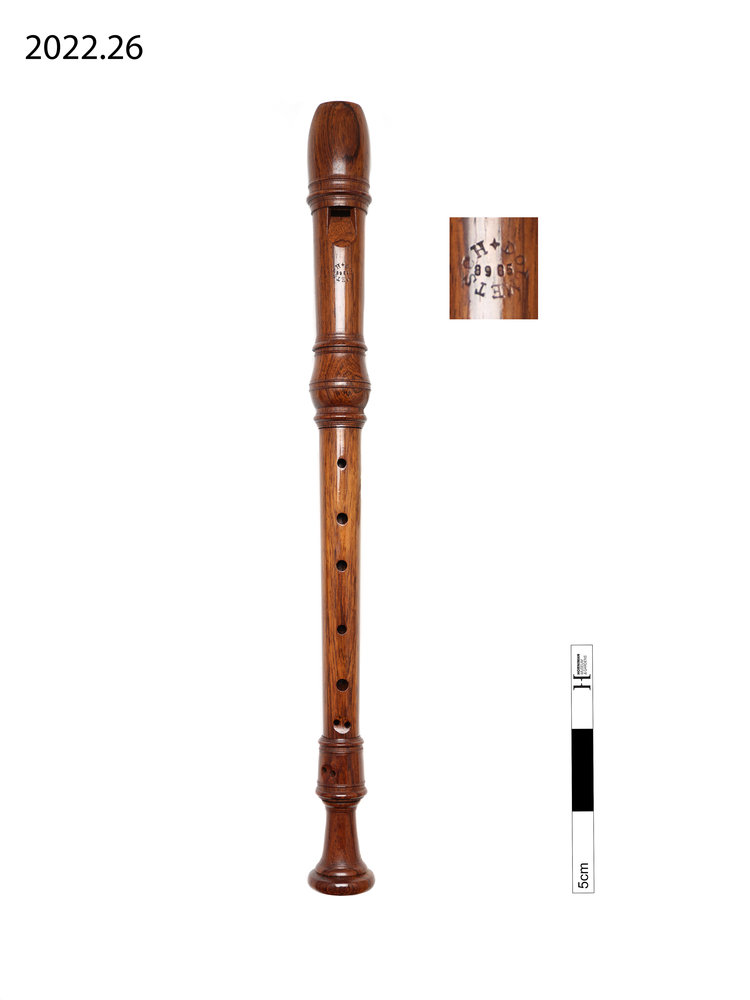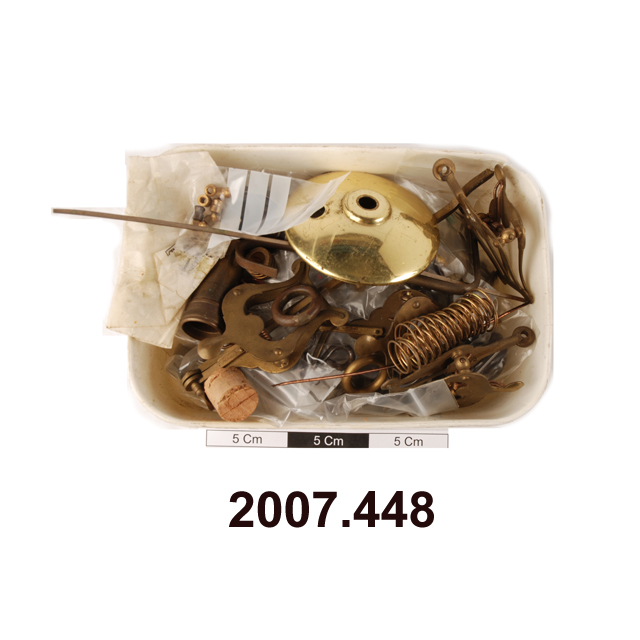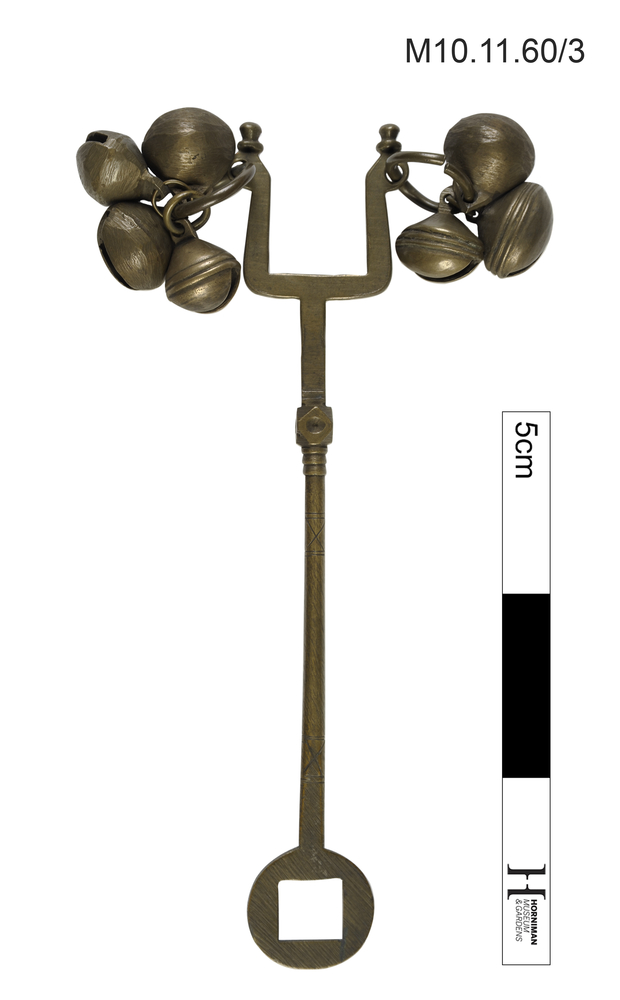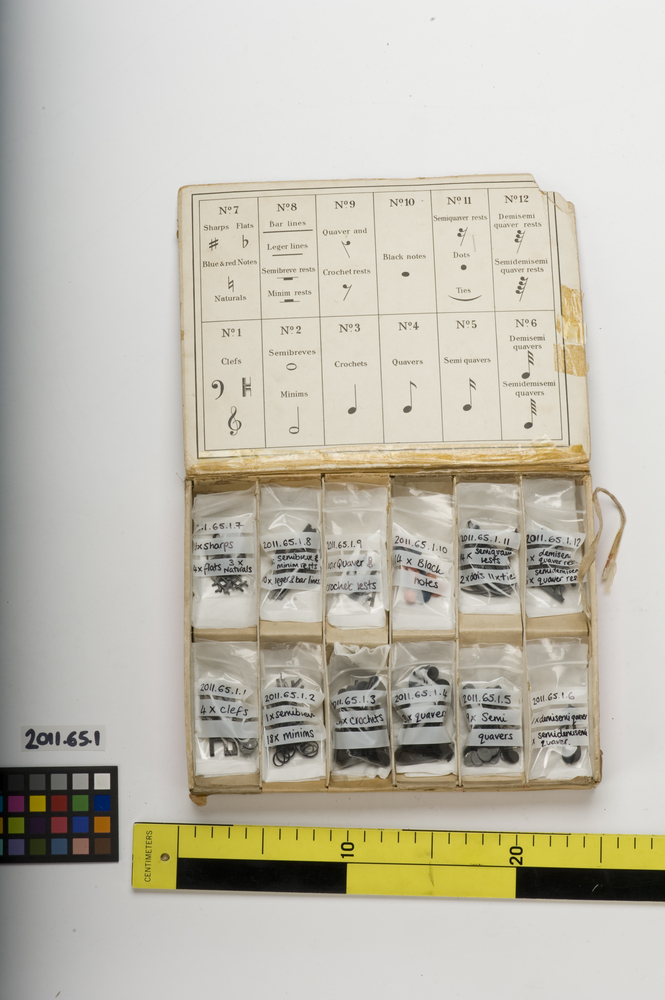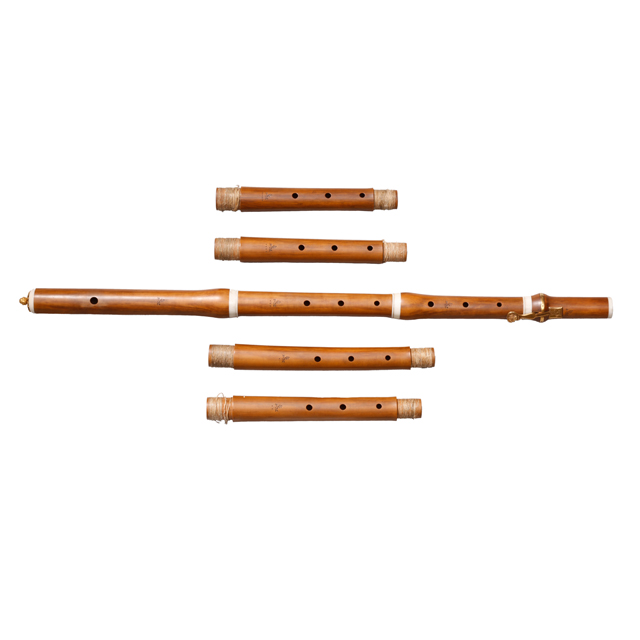

Set of two flutes in D, violetwood, ivory mounts, tenons lapped with wound thread. Each has one key, and five numbered corps de réchange for upper joint. Keys flat and generally square. Fixed stoppers. Flute I: Gold key, mounted in a gold band with gold pivot pin and bush. The finger plate is formed in a stylised shell design; the cover plate bears a monogram inscription surmounted by a crown. The ivory mounts of this instrument are much narrower than those of Flute II, having approximately 1.0 cm width at joints and 0.5 cm width at foot. The end cap of ivory is rounded and surmounted by a gold ornament, the base a rosette of leaves, the boss an unopened composite flower. Flute II: Silver key, mounted on pivot carried through an ivory mount; no pivot bush; flat, roughly circular, finer plate. The ivory mounts are much wider than those of Flute I, the widths being 2.4, 2.25 and 3.0 cm at the joints and 0.75 cm at foot. The cap is of ivory and squared. Stamped: T. Lot (Rampant lion mark). With sharkskin case with silver fittings and tray to lift out. Green velvet lining.
The more ornate flute of this pair, with its monogrammed gold key, may have belonged to a member of the French royal family. Both flutes could accommodate variations in pitch, which was not standardised at the time they were made. In each one the upper middle joint, bearing the three holes covered by the fingers of the left hand, has been built in five different lengths. Other types of woodwind instruments made in continental Europe during the same period, such as oboes, also used these interchangeable joints: 'corps de rechange'.



